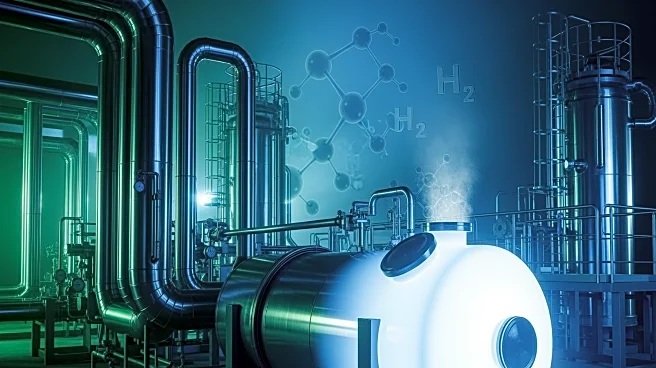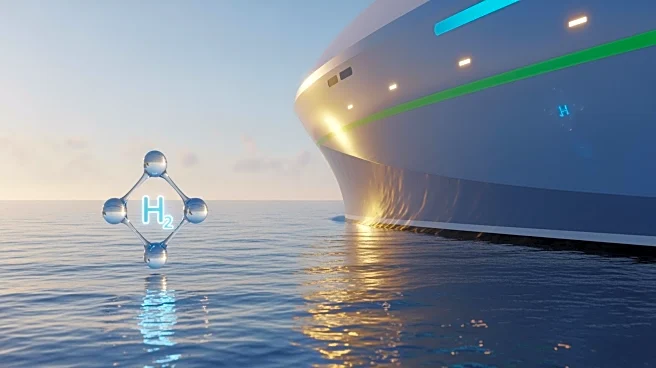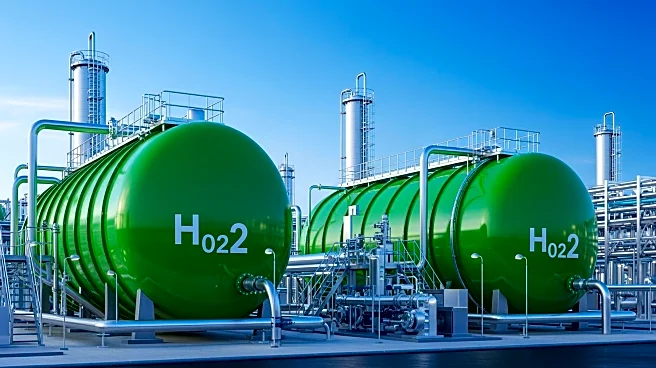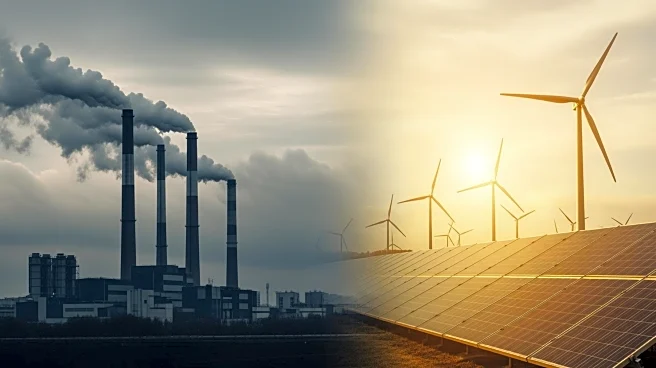What's Happening?
Air Liquide has announced the successful start-up of the world's first industrial-scale ammonia cracking pilot unit at the Port of Antwerp-Bruges, Belgium. This unit has a conversion capacity of 30 tons
per day, marking a significant advancement in hydrogen fuel technology. The innovation addresses the challenge of transporting hydrogen over long distances by using ammonia as a carrier. Ammonia, composed of hydrogen and nitrogen molecules, can be produced cost-effectively in regions with abundant renewable energy sources. The existing global infrastructure for ammonia production and transportation facilitates its export from energy-rich areas to end-users worldwide, where it can be converted back into hydrogen. This development is crucial for the decarbonization of industry and mobility, expanding Air Liquide's portfolio for low-carbon and renewable hydrogen production.
Why It's Important?
The ability to efficiently transport hydrogen is a major hurdle in establishing a global hydrogen economy. Air Liquide's breakthrough in ammonia-to-hydrogen conversion technology offers a viable solution, potentially revolutionizing the hydrogen supply chain. This innovation supports the energy transition by enabling access to low-carbon hydrogen, which is essential for reducing industrial emissions and promoting sustainable mobility. The technology could benefit regions rich in renewable energy by allowing them to export ammonia, thus contributing to global decarbonization efforts. Stakeholders in the energy sector, including industries and governments, stand to gain from this advancement as it provides a pathway to cleaner energy solutions.
What's Next?
Air Liquide's successful pilot unit sets the stage for the development of world-scale ammonia cracking plants. The company plans to leverage its proprietary innovations in process safety, material testing, and advanced catalysis to scale up the technology from laboratory research to industrial applications. This could lead to new low-carbon hydrogen supply chains, further supporting the energy transition. As the technology is adopted, it may prompt increased investment in renewable energy infrastructure and stimulate policy changes to support hydrogen as a key component of future energy systems.
Beyond the Headlines
The development of ammonia-to-hydrogen conversion technology raises important ethical and environmental considerations. It highlights the need for sustainable practices in energy production and transportation. The technology's success could influence global energy policies, encouraging a shift towards renewable energy sources and reducing reliance on fossil fuels. Additionally, it underscores the importance of innovation in addressing climate change challenges, potentially inspiring further research and development in clean energy technologies.












